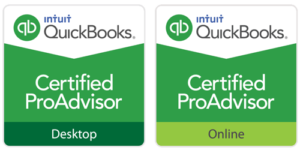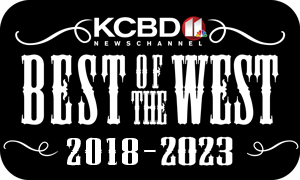Since the passage and signing into law of the CARES Act, we have been working to learn the provisions. There is a lot of information and uncertainty out there, so please don’t hesitate to reach out for guidance. As many small businesses and business owners have started looking into the SBA loan programs available, we have received many questions on the differences in the two main programs discussed. The Economic Injury Disaster Loan (EIDL) and the Paycheck Protection Program (PPP) are the available assistance being discussed nationwide. As we are not an SBA approved lender, nor a lending institution at all, please use this information for your planning, but consult your bank or SBA office for exact details. Please check here for all of our previous updates.
| EIDL | PPP |
|---|---|
| Who is the lender? | |
| The SBA | A Bank that does SBA 7(a) Loans, underwritten by the SBA |
| What is the maximum amount of the loan? | |
| The maximum loan size is $2 million. Applicants who apply for this loan may request an advance of up to $10,000 from the SBA. The advance will be distributed within 3 days. Applicants are not required to repay this advance if they are subsequently denied a loan. | The maximum loan size is $10 million. The calculation is as follows:
Payroll includes salaries, commissions, tips, certain employee benefits (including health insurance and retirement benefits), state and local taxes and certain types of compensation to sole proprietors or independent contractors. Payroll costs specifically exclude compensation of an individual employee in excess of an annual salary of $100,000, foreign employees, FICA and income tax withholdings |
| What is the annual interest rate? | |
| 3.75% for businesses, 2.75% for non-profits | Not to exceed 4% |
| What Is the term of the loan? | |
| Up to 30 years | 10 years |
| When is the first loan payment due? | |
| One year after the loan origination date (interest is accrued during the deferment) | At least six months after the loan origination date (interest is accrued during the deferment) |
| What can we use the loan for? | |
| Financial obligations and operating expenses that could have been met had the disaster not occurred | Payroll costs (as defined above), group healthcare benefits, insurance premiums, and interest (but not principal) on mortgages or other debt incurred prior to February 15, 2020, rent on any lease in force prior to February 15, 2020 and utility payments |
| What collateral is required? | |
| The SBA will place a UCC lien against the assets of the business | No collateral is required from eitherthe business or its owners |
| Is a personal guarantee required? | |
| Yes, for loans > $200,000, owners of > 20% of the business, managing members of LLCs, managing partners of LPs. However, no liens will be taken against real estate owned by the guarantor | No |
| Is there a loan forgiveness program? | |
| No | Yes – calculated as the amount spent by the borrower during an 8-week period after the origination date of the loan on: payroll costs (as defined above), interest payment on any mortgage incurred prior to February 15, 2020, payment of rent on any lease in force prior to February 15, 2020, and payment on any utility for which service began before February 15, 2020. Payroll costs are subject to the same exclusions as noted above |
| What reduces the forgiveness? | |
| N/A | The amount forgiven is reduced based on failure to maintain the average number of full-time equivalent employees versus the period from either February 15, 2019, through June 30, 2019, or January 1, 2020, through February 29, 2020, as selected by the borrower. The amount forgiven is also reduced to the extent that compensation for any individual making less than $100,000 per year is reduced by more than 25% measured against the most recent full quarter. Reductions in the number of employees or compensation occurring between February 15, 2020, and 30 days after enactment of the CARES Act will generally be ignored to the extent that reductions are reversed by June 30, 2020. Forgiven amounts will not constitute cancellation of indebtedness income for federal tax purposes. |
| Do I need to have filed my 2019 Taxes to apply? | |
| No, 2019 Taxes do not have to be filed prior to applying for the loan. However, businesses will be asked to submit IRS form 4506T, which provides the SBA with access to historical tax returns | Will depend on the lender |
| How long will the loan application take? | |
| 2-3 weeks plus an additional 5 days for funding | Unknown at this stage |
| Can I apply now? | |
| Yes, the application process is live, and loans are available now. There is no obligation to accept the loan if you qualify. The SBA typically allows 60 days to accept the loan offer, but you can always extend this if needed. Therefore, it is better to apply ASAP | No. Now that the CARE Act is law, the SBA will give their loan guidelines to the banks. The banks will then prepare their loan application process. We expect this to take at least two weeks |
| What businesses/entities can apply and what are the affiliation rules? | |
| Small businesses. There are several standards the SBA uses to define a small business, and it varies by industry. As a general guide, less than 500 employees and $35 million in revenue would typically qualify. Applicants for SBA loan programs typically must include their affiliates when applying size tests to determine eligibility. This means that employees of other businesses under common control would count toward the maximum number of permitted employees |
|
Please note that businesses cannot get both EIDL and PPP loans at the same time. You can apply for the EIDL loan now and the PPP loan when it becomes available. If you qualify and accept the EIDL loan, and you subsequently qualify for the PPP loan, you can re-finance the EIDL loan with the PPP loan, OR you can apply for both loans and decide which one you take if you qualify for both. Loans are limited to one per Taxpayer Identification Number.





